Kahlo’s life began and ended in Mexico City, in her home known as the “Blue House” (La Casa Azul) Her work has been celebrated in Mexico as emblematic of national and indigenous tradition, and by feminists for its uncompromising depiction of the female experience and form.
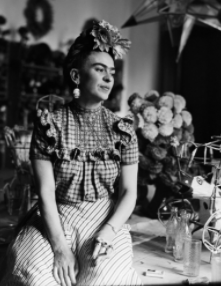
Image source: https://search.creativecommons.org/photos/6d8baf55-d4ef-4113-bfc9-266ebf6a1fc6 by Sabatu
What makes Frida so special?
Frida claimed to be born on 1910, at the beginning of the Mexican revolution, because she wanted her life to begin with the birth of modern Mexico.
This detail introduces us to a singular personality, characterized since her childhood by a deep sense of independence and rebellion against social and moral ordinary habits.
Moved by passion and sensuality, proud of her “Mexicanidad” and cultural tradition, she set against the reigning Americanization: everything mixed with a peculiar sense of humour.
“I paint self portraits because I’m alone most of the time,because I’m the person I know the best.” (Frida Kahlo)
Her life was marked by physical suffering, in fact she contracted the polio at the age of five and got worse over the course of her life.
On 1925 a bus accident brought severe injuries to her body caused by a pole that pierced her from the stomach to the pelvis. Her body was tortured with several surgical operations (32 throughout her life), with corsets of different kinds and mechanical “stretching” systems.
A lot of her works were painted while she was laying in bed.
Because of her physical conditions, Frida couldn’t have children. This misfortune was devastating for her.
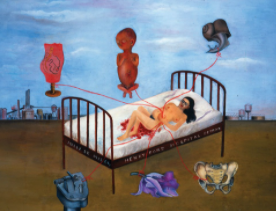
Image source: https://search.creativecommons.org/photos/c54fe5d0-e2b1-4ad0-9b60-d00df774c035 by libbyrosof
Surreal or Realist ?
Unlike Rivera’s murals, which were grandiose and filled with political ideology, Kahlo’s work was intimate, personal, and in the tradition of easel painting. Usually autobiographical, she painted the events of her life with symbolic elements and situations, creating a dreamlike reality, frighteningly real but fantastic and magical.
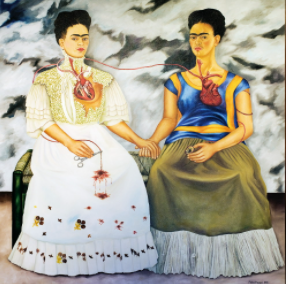
Image source: https://search.creativecommons.org/photos/a0d56050-0f79-4184-8b61-90fe108283a0 by Peter K. Levy
From 1938 her painting activity has increased: her art works are no longer reduced to a simple description of her life events but they express her inner state and her way of perceiving the relationship with the world.
For a brief period she combined the elements of the classic religious Mexican tradition with those of surrealist production in her works.
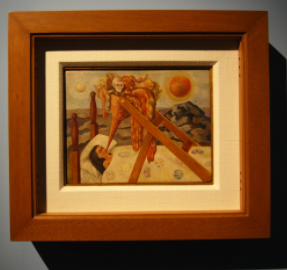
Image source: https://search.creativecommons.org/photos/d4856322-ba5b-48ed-8207-b5cbc7b47685 by pollobarca2
“Anguish and pain. Pleasure and death are nothing but a process to exist”. (Frida Kahlo)
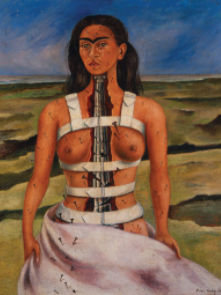
Image source: https://search.creativecommons.org/photos/9062402f-c0a3-4860-89cc-3d37c9f38017 by libbyrosof
Despite the emphasis on pain, repressed eroticism and use of hybrid figures, Kahlo ‘s vision was far from surreal: her imagination was not a way to go out of logic and immerse herself in the subconscious but rather the product of her life that she was trying to make accessible by a symbolism. His idea of surrealism was playful, saying that it “is the magic surprise to find a lion in the closet, where you were sure to find the shirts”.
What are her masterpieces?
- Frida Kahlo, Diego in my mind (Self-portrait as Tehuana), 1943, Mexico City;
- Frida Kalho, Self portrait with necklace of thorns and hummingbirds, 1940, Nickolas Muray Collection all’Harry Ransom Center, The University of Texas, Austin;
- Self Portrait with Cropped Hair, 1940. Oil on canvas, MoMA, New York;
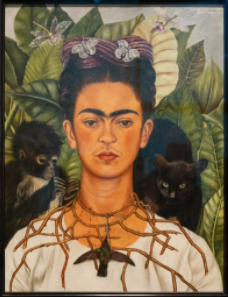
Image source: https://search.creativecommons.org/photos/4499a82e-20f4-422c-9946-b5be9500aabb by jamie_okeefe
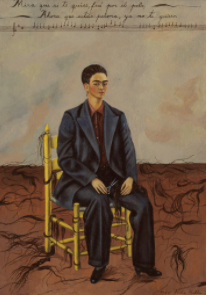
Image source: https://search.creativecommons.org/photos/b4e979ab-2a1b-4034-a113-357a7dd6c1f6 by Tulip Hysteria / Go to albums
- The Broken Column, 1944, Oil on Masonite, Dolores Olmedo Foundation, Mexico City, Mexico.
- The Two Fridas, 1939, oil on canvas, Museo De Arte Moderno, Mexico City;
- Frida Kahlo, Henry Ford Hospital, 1932, Oil on metal, Collection Dolores Olmedo Foundation, Mexico City;
- Frida Kahlo, Self Portrait, 1926, Oil on canvas, Private collection, Mexico City.
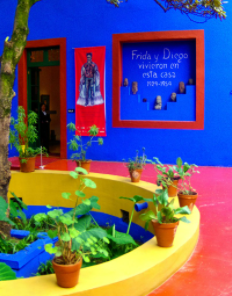
Image source: https://search.creativecommons.org/photos/3ab5c163-fa3c-459c-b84e-3f1fe8965ba3 by Carl Campbell
Today the Blue House is The Frida Kahlo Museum and her personal effects are exhibited throughout the house, as if she still lived there.
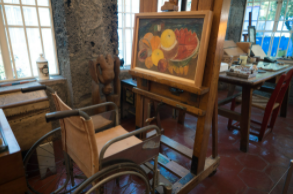
Image source: https://search.creativecommons.org/photos/4be17e7c-8004-424b-9e6e-27dcad49221f by nan palmero
Info source:
http://www.artcyclopedia.com/artists/kahlo_frida.html
https://en.wikipedia.org/wiki/Frida_Kahlo
http://biography.yourdictionary.com/frida-kahlo
Please also visit: http://www.jbdesign.it/idesignpro
